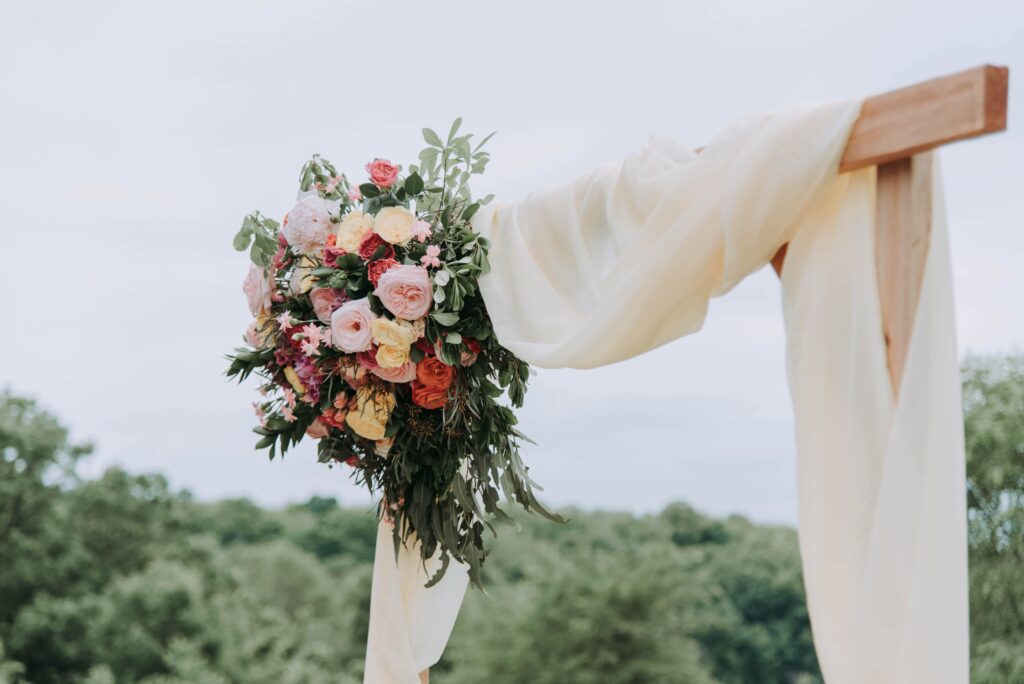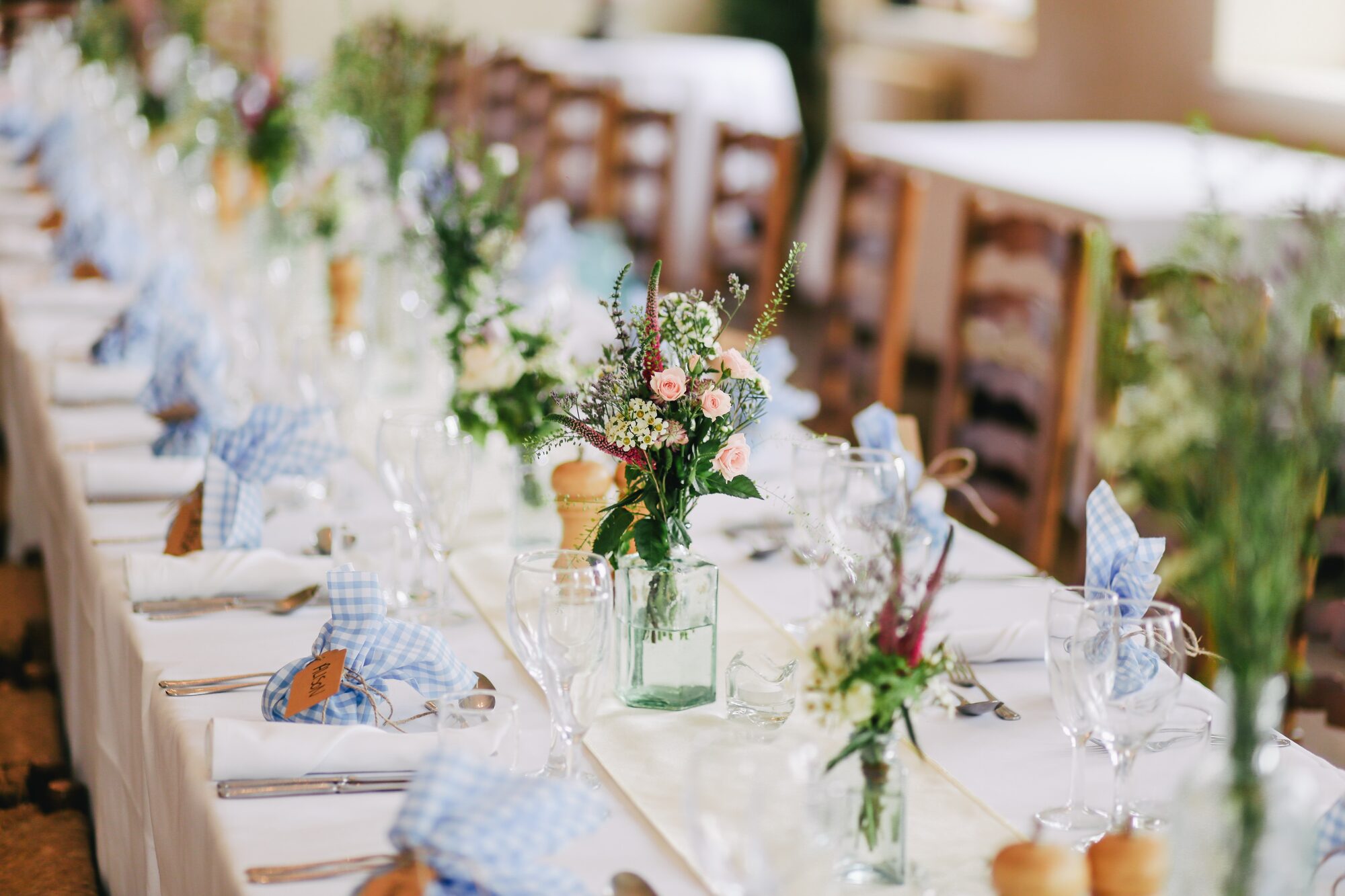
Wedding Flowers
There are one million and one websites that will show you hundreds of pretty pictures and design ideas about weddings. So rather than bombard you with yet more ideas, we’ve picked some of our favourite resources so you can browse them at leisure.
What we did think would help is a bit of practical advice on how to choose the best florist and what to watch out for when considering your budget.
Now, we know some people may try to tell you that wedding flowers are an area you can cut corners on/do it yourself/not bother about it.
We say don’t listen to those people!
Not just because we are terribly biased about flowers but because whatever flower you choose will live with you long after your wedding day is over, because your wedding blooms will feature in almost every photograph of your day. So however much or however little you decide to spend, they have to be right.
Skip to a Section
What to Spend
No one can turn a sow’s ear into a silk purse but our GFG-ers are pretty nifty at stretching budgets to the hilt if you are prepared to be flexible. For example, an all rose bouquet using scented garden roses will probably cost around £95 to £150 simply because these are probably some of the most expensive roses you can choose. Swap the roses for lisianthus and designer carnations and you could see dramatic savings.
At the reception large candelabras festooned with roses, hydrangea and ivy could cost in the region of £200 per table. If you use ceramic pots with tall white twigs covered with pretty bows and butterflies you’ll get loads of impact for around half the price.
Add in the fact that any pricing will depend on the size of your design, the time of year (seasonal will always be more cost-effective), the logistics (labour is as expensive as the flowers – no florist can live on fresh air!), and it’s almost impossible to give finite price points until a florist knows what it is you want. So, the best thing to do is talk to three florists and get their input and then choose the one that is right for you, not just on price but attitude as well. However one word of caution, be wary of any florist who undercuts another quote. A good florist will have costed your wedding sensibly (they don’t want to lose your business) and someone promising the moon for a fraction of the price may struggle to make your dreams come true.
Choose your Florist Carefully
Given your flowers are just as important as the cake and dress you need to be totally sure your florist is on the same wavelength and make sure you book the date early. The best ones will be taking bookings up to 12 months in advance so it’s not something to leave to the last minute, especially if you are planning a big affair.
Ideally you’ll work with someone who you’ve heard of or been recommended to but as a double check look at their websites and read testimonials from other brides as well.
You’ll probably have your own ideas based on things you’ve seen in magazines and places like Pinterest etc but a good florist will also have loads of magazines and books you can look at as well and be able to come up with ideas based on your thoughts from their own portfolio.
Once you’ve got a shortlist of three arrange a consultation – the initial chat is usually free – which will give you a chance to see how you get on and if it isn’t gelling straight away move on and find someone you are happy with – it will be better for both sides.
To DIY or To Not DIY
If you’re thinking of going down the DIY route great but make sure you have the time. Not because we are being protective of our florists, it’s YOU we’re being protective of. Flowers may look pretty but boy they are hard work. To be sure they last every single one will need to be cut and conditioned two/three days before you can even think of arranging them and you can only really start making up designs the day before.
All of which means you run the risk of wrecking your hands before your big day – thorny roses are particularly hard work – plus you’ll be tired from lugging them around, filling buckets etc and it can be jolly messy so unless you have an outhouse/shed/garage be prepared for a lot of clearing up. Having had our own weddings – and no we didn’t do our own flowers either – our advice would always be to get professional help wherever possible so that you can focus on enjoying your once-in-a-lifetime special day.
That said, if you have relatives that want to get involved or you really want to do some of it yourself see how your florist can help you. Lots of them have packages and services that can take a lot of the burden off you. For example some offer a buying, conditioning and delivering service for a nominal fee while others will run workshops to show you how to make the table decorations etc. Obviously they’ll charge, but it can make the whole thing so much easier and can double up as a Hen/pre wedding girls night out.
Bouquet Styles

Nosegay Bouquet
A very small and delicate posies with tiny headed flowers and usually only one or two different varieties. Not necessarily the cheapest but certainly one of the most delicate.
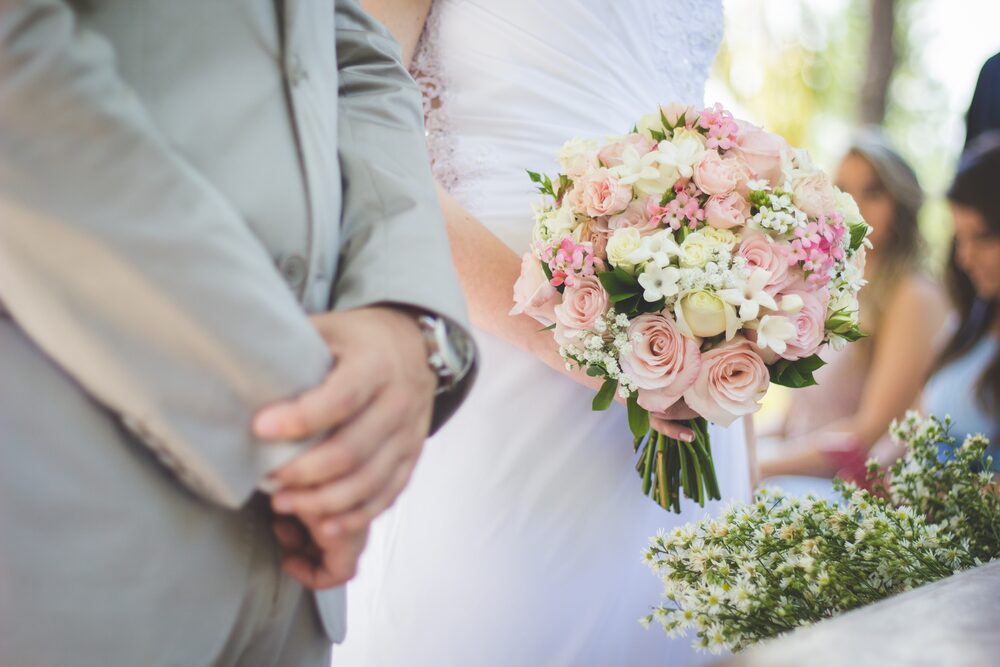
Formal Posy
A rounded dome of flowers, usually massed roses of one colour. Can be made as a tight hand tied bouquet or placed onto a holder to create a lighter bouquet.
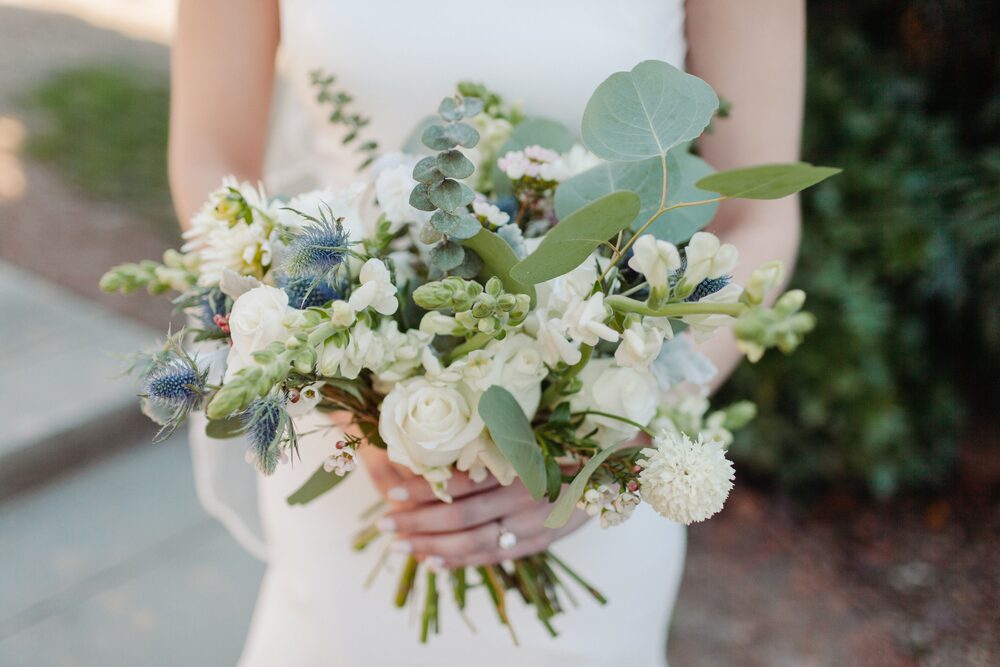
Loose Posy
Still round but less structured and usually with several flower types and loser foliage. Again can be made as a hand tied bouquet or wired
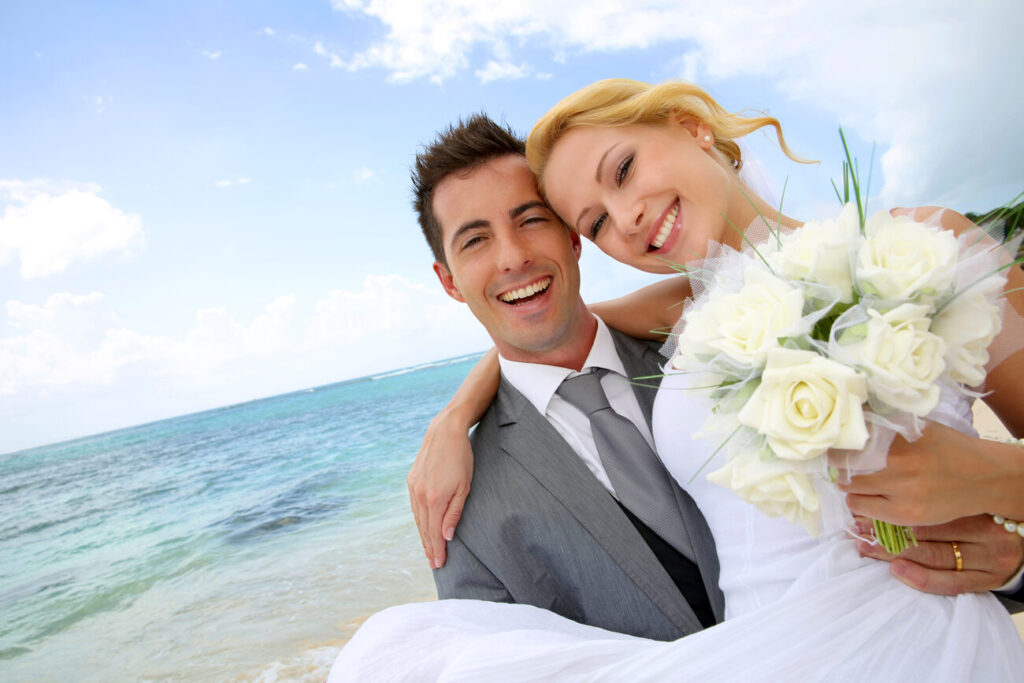
Ballerina Posy
Small and round but interspersed with Tulle. Introduced in the 40’s when flowers were hard to get this is now a pretty alternative to the nosegay.
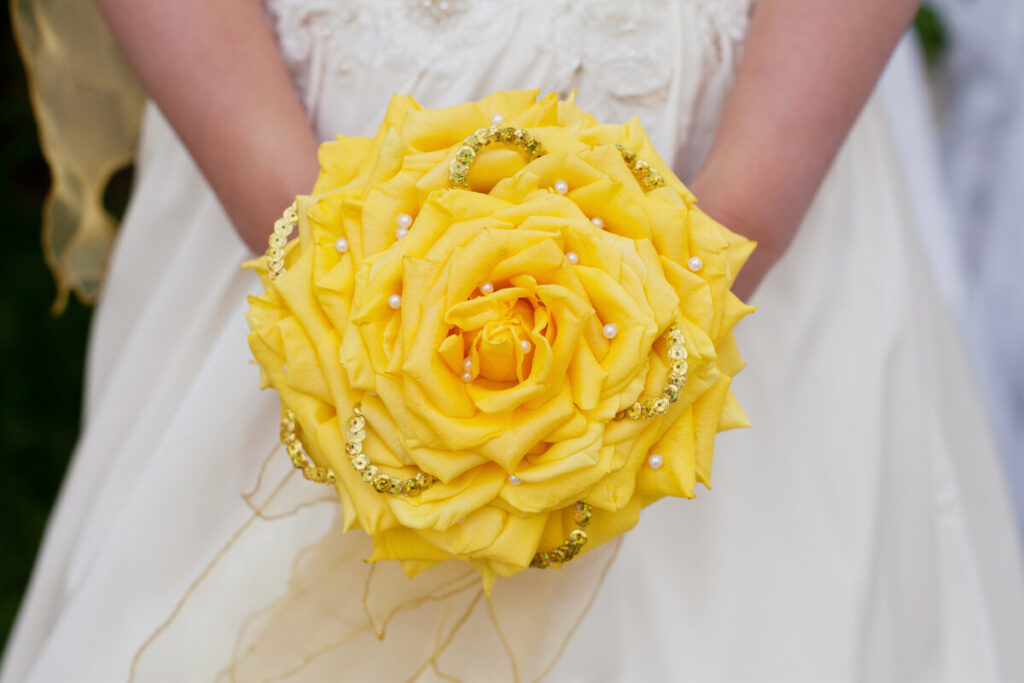
Composite Bouquet
Also known as Glamellia or Carmen Rose. Very expensive as they involve taking hundreds of petals of roses, lily or gladioli and re-assembling them into a large flower head.
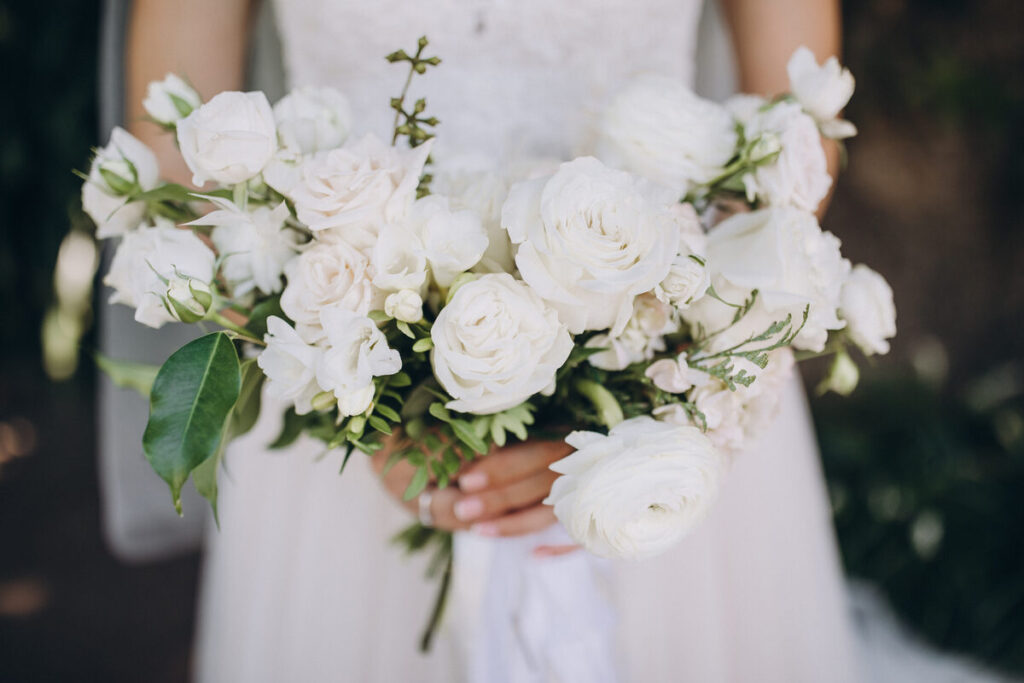
Crescent Bouquet
A formal bouquet, usually wired or made onto a foam based holder in a gentle curve shape.

Shower Bouquet
A long semi flowing bouquet either fully wired or made onto a foam based holder

Cascading Bouquet
Also known as a Waterfall. The fullest and longest bouquet you can choose and allows for the maximum amount of flowers
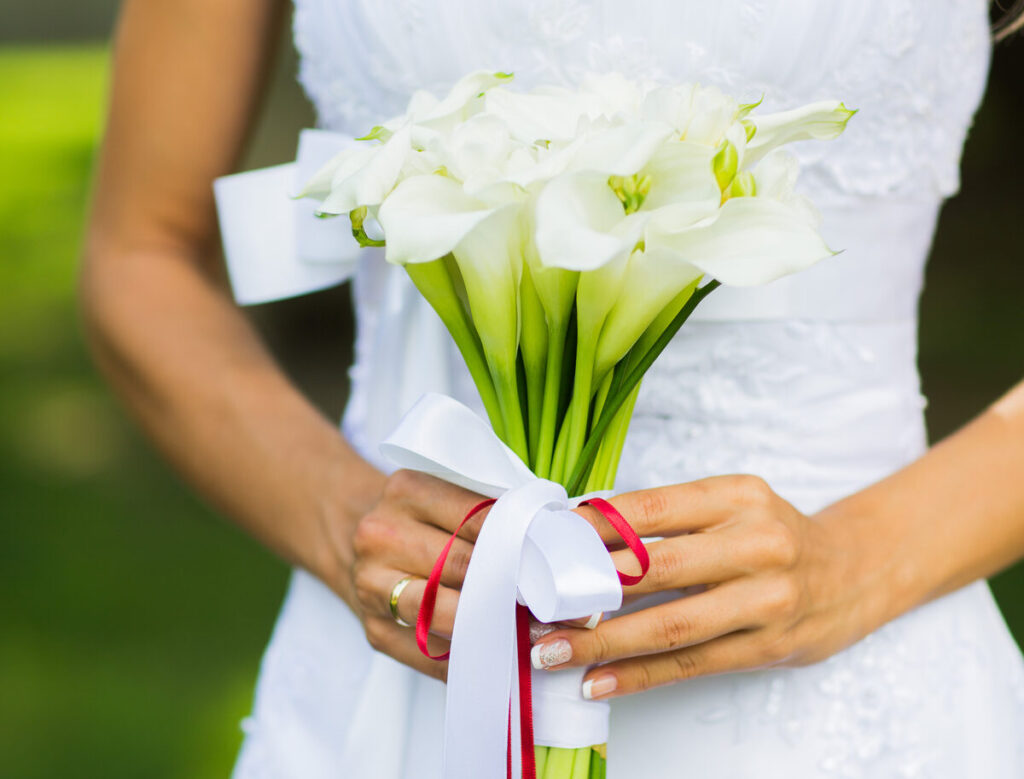
Wand Bouquet
Also known as the Sceptre, long flowers, usually calla lillies or roses, are worked into a wand shape with the stems bound and decorated to match the colour scheme
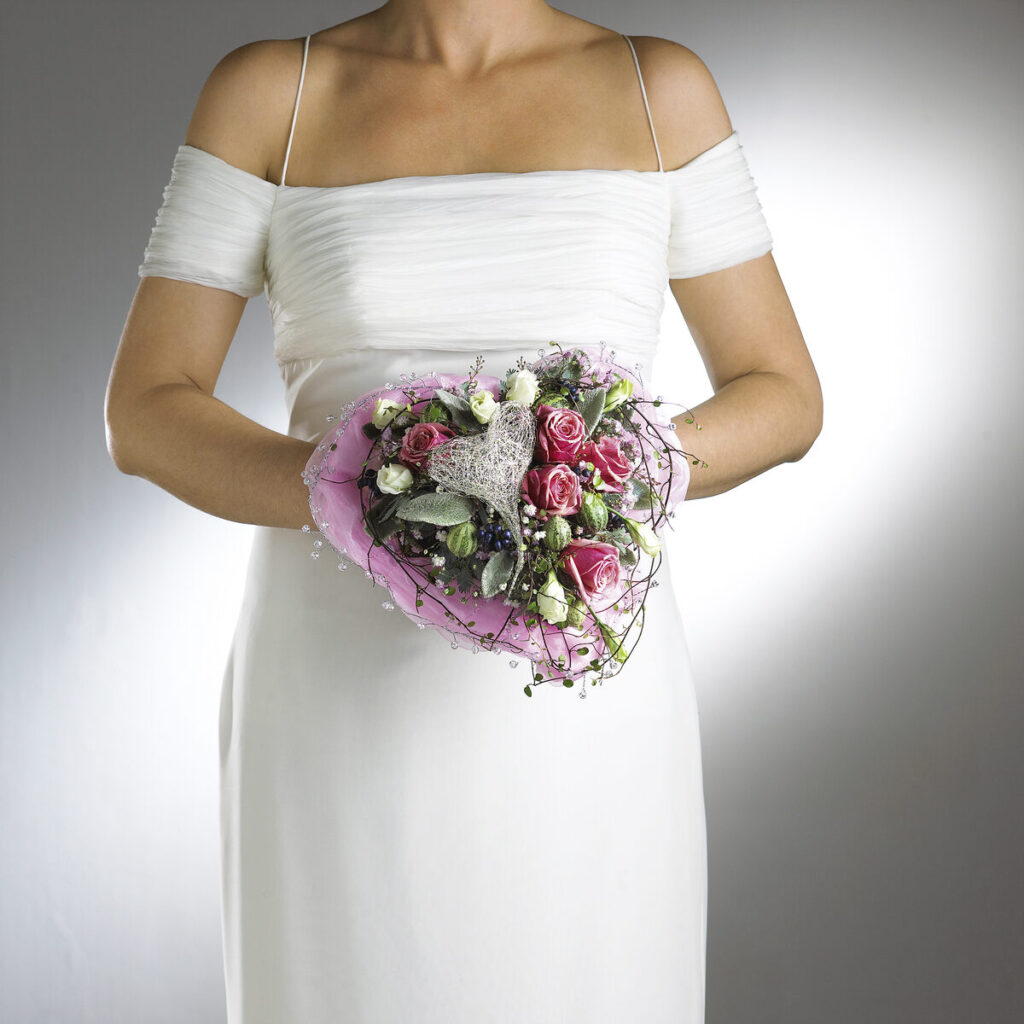
Heart-Shaped
Made onto a special heart shaped foam holder or constructed into a wire or foliage based frame.
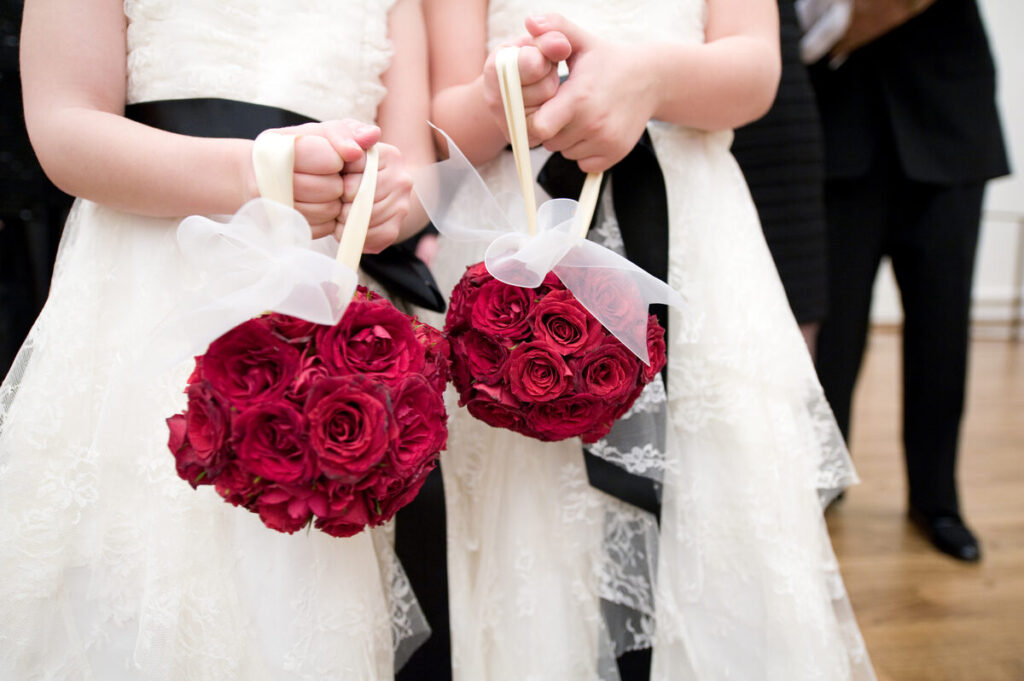
Pomander
Foam or moss spheres covered in small headed flowers and suspended on ribbon.
Why Wedding Flowers Cost What They Do
Everyone thinks weddings are a licence to print money, especially when it comes to flowers. This is not true. Wedding flowers cost more than an everyday bouquet because of the extra work and extra care the florist has to take to ensure each petal is perfect for you. If your wedding flowers go wrong there is no second chance, they can’t deliver a new bouquet the next day because there isn’t a next day!
High Stakes
Your chosen florist needs to make sure that not only have they got enough flowers for your day, but some spares in case Mother Nature plays nasty tricks and kills any off between arriving at the shop and being delivered to you. They’ll also probably have had to pay a premium price for the flowers, especially if you’ve chosen a specific variety or colour; at the height of the wedding season the price of white roses can double and even triple on some days, yet, the chances are your florist had to quote your price anything up to a year in advance.
Additional Workers
There is extra labour involved in a wedding. All that cutting and conditioning has to be done in the last two days which often means overtime or extra staff, plus deliveries to not just get it there on time but cleared away as well; long after you and your guests have gone home and you and your partner have whisked away on your honeymoon.
Consultation
When it comes to time spent on discussing your wedding most florists will build in ‘talking time’ and be happy to have one consultation where you thrash through the ideas and a follow up to go through the finer detail. However don’t expect lots of meetings or changes to your plans without the florist getting a teensy weensy bit frustrated.
Finally…
In short, a professional florist will quote what is needed to make a fair living and do a brilliant job. So if you find someone willing to undercut other quotes dramatically we would suggest you be very careful and get plenty of references before committing. Not said to be beastly, but we have heard too many horror stories of bouquets having to be fixed the morning of the wedding. You don’t expect your dress to fall apart, you don’t want the flowers falling apart either.
